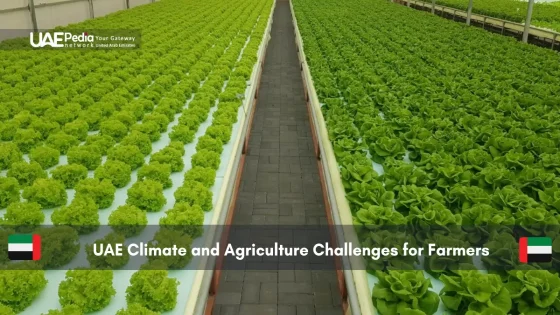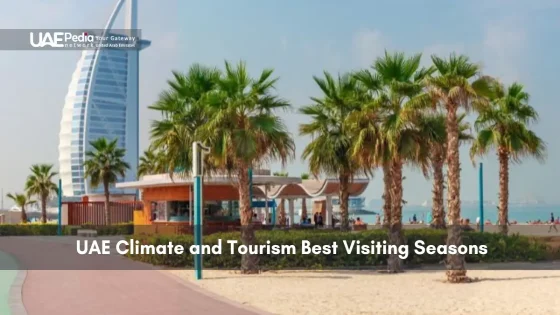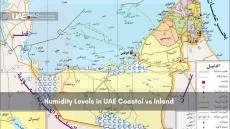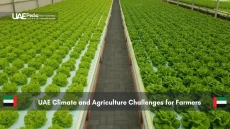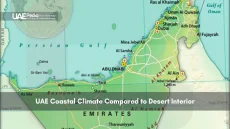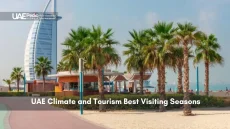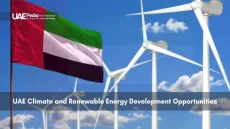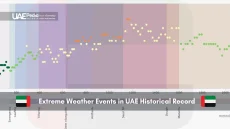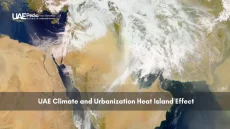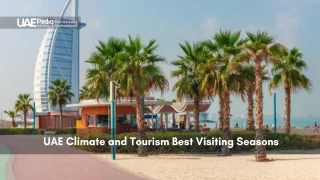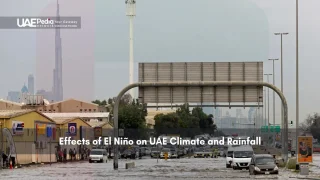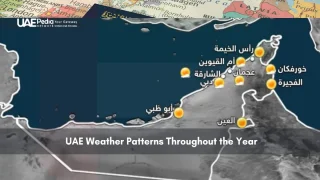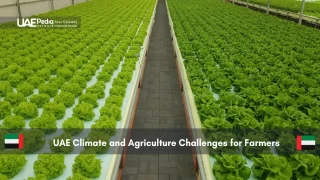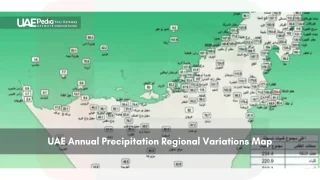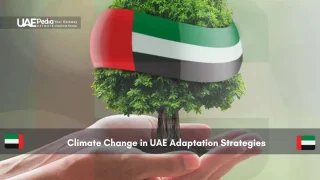Did you know summer temperatures here can climb 15°F higher than Death Valley’s record? This isn’t just heat—it’s a rhythm that shapes everything from architecture to morning coffee routines. The arid environment of the united arab emirates demands ingenuity, blending ancient Bedouin wisdom with cutting-edge tech to thrive where rainfall averages less than 4 inches yearly.
Modern cities here defy expectations. Glass skyscrapers use nano-coatings to repel dust storms, while underground irrigation systems revive date palms older than some nations. Yet this balance remains fragile—rising global temperatures add pressure to water sources already stretched thinner than camel hair.
We’ll explore how communities harmonize tradition with innovation, like solar farms designed like palm groves or fog-catching nets inspired by desert beetles. It’s not just survival—it’s redefining what’s possible in one of Earth’s most extreme ecosystems.
Key takeaways:
- Ancient cooling techniques meet AI-driven energy grids in urban designs
- Water scarcity fuels creative solutions, from cloud seeding to recycled wastewater systems
- Climate change accelerates the need for adaptive strategies across the arab emirates
Overview of the UAE Desert Climate
Imagine a land where golden sands meet turquoise coasts, creating a dance of extremes. The region’s geography spans endless dunes and bustling shorelines—a paradox where life thrives despite receiving just 140-200 mm of rainfall annually. Coastal humidity tempers inland aridity, forming microclimates that shift faster than a sandstorm’s path.
Geographic and Environmental Context
Vast open spaces dominate 80% of the terrain, while modern cities hug the Persian Gulf. This split creates two worlds: one shaped by relentless sun, the other cooled by sea breezes. Limited precipitation here isn’t just a statistic—it’s a daily reality influencing everything from groundwater reserves to urban landscaping choices.
Historical Climate Trends
Records show curious patterns—like the 2016 downpour that flooded Dubai’s streets with 75mm of rain in hours, matching typical yearly totals. “We’ve seen dry spells break without warning,” shares a local date farmer, “like the land itself forgets how to be thirsty.”
Recent decades reveal a 12% drop in average precipitation since 1990, pushing communities to rethink water use. From ancient falaj irrigation systems to AI-powered cloud seeding, adaptation isn’t new—it’s survival reimagined. Each innovation writes a fresh chapter in this ongoing story of balance between people and their environment.
Seasonal Variability and Weather Dynamics
Ever packed a sweater and sunscreen for the same trip? Here, winter nights can dip to 10°C while summer afternoons roast at 50°C—a 40-degree swing that keeps life interesting. The country operates on two gears: mild, breezy months from November to March, and a furnace-like stretch from June to September, with transitional periods that tease both extremes.
Winter and Transitional Periods
December mornings might surprise you—crisp air nips at exposed skin as fog clings to date palms. These cooler months bring rare rainfall (averaging 2-3 days per year in some areas), turning wadis into temporary streams. Locals seize this window for outdoor festivals and desert camping, layering light jackets over kanduras as stars pierce the cloudless sky.
Summer Extremes and Dust Storms
Come June, thermometers in Abu Dhabi regularly hit numbers you’d expect on a pizza oven. “We reverse our schedules,” explains a Dubai resident. “Errands happen at dawn, then we retreat until sunset brings relief.” Haboob dust storms roll in like tawny tsunamis, reducing visibility to arm’s length while modern cities deploy sensor-activated building seals.
Adaptation shines in these contrasts. Schools adjust timetables, construction crews work night shifts, and homes blend Arabic wind towers with smart AC systems. Even coffee shops pivot—iced karak chai outsells hot versions 3-to-1 from May to October. It’s a dance with the elements, choreographed across millennia yet reinvented daily.
Understanding the “UAE desert climate”: Temperature, Rainfall, and Wind Patterns
What if I told you this place sees temperature swings wilder than a Netflix docu-drama? Daytime highs regularly hit 113°F in summer—but thermometers have spiked to 125°F during heat domes. Winter brings relief, with January averages around 75°F. These extremes aren’t just numbers—they’re daily realities shaping how people hydrate, work, and even park cars (steering wheels can literally burn hands).
Rain here plays hard to get. Annual averages hover near 4 inches, but 70% falls in brief, intense bursts. A single 2020 storm dumped 9.8 inches in Al Ain—triple the usual yearly quota. “It’s like the sky forgets how to cry, then sobs uncontrollably,” laughs a water management expert. These erratic downpours strain reservoirs while flash floods sculpt new wadi channels overnight.
Wind tells its own story. Northwest shamal gusts clock 40 mph for up to 3 days straight, carrying enough dust to bury roads. Modern cities combat this with:
- AI-powered air quality sensors triggering building sealants
- Windbreak forests grown from drought-resistant ghaf trees
- Construction codes requiring rounded edges to deflect sand
Recent meteorological data reveals a pattern: every 1°F temperature rise correlates with 12% longer dust storm seasons. Urban planners now use these insights to design smarter drainage systems and shaded public spaces. It’s science and survival, blended like cardamom in Arabic coffee—sharp, necessary, and deeply rooted in the land’s rhythm.
Climate Change Impacts and Adaptation Strategies
Picture this: 2023’s April downpour dumped 256 mm in 24 hours—more than two years’ typical rainfall—turning highways into rivers. These aren’t weather quirks anymore. They’re signals of a new reality where dry spells and deluges spar like mismatched boxers.
Emerging Climate Challenges
Precipitation swings now rival rollercoasters. Last year saw 18% less rain than the decade average, yet single storms account for 80% of annual totals. Sandstorms? They’ve grown 34% fiercer since 2015, with one 2022 event burying 1.5 meters of infrastructure overnight. “We’re clocking events that rewrite our playbooks,” says a Dubai meteorologist. “Response time shrinks as impacts compound.”
Government and Community Initiatives
Authorities counterpunch with precision. Cloud-seeding drones boost rainfall by 15%, while AI predicts storms 48 hours earlier. Communities rally too:
- Farmers use soil sensors to track moisture down to 0.1 meters
- Neighborhood apps share real-time flood alerts during peak events
- Schools host “water warrior” workshops teaching kids to map household usage
One coastal town’s story inspires: after losing 200 meters of beachfront in 2021, locals planted 8,000 mangrove saplings. Today, their living barrier stands 3 meters tall—and growing. As recent studies show, such grassroots efforts amplify national strategies, proving every drop—and minute—counts.
Economic and Social Impacts of Extreme Weather Conditions
Ever tried jogging in a hair dryer? That’s what summer feels like for construction crews here. In 2023, a record-breaking heatwave delayed 17 major projects across the middle east, costing firms $42 million in overtime pay. But it’s not just about sweat and delays—extreme weather rewrites how cities function and people thrive.
Building Through the Blaze
Dubai’s Metro extension faced a unique challenge last August: melting asphalt. Workers now pour concrete at 3 AM using infrared sensors to track cooling rates. “We’ve swapped hard hats for cooling vests,” says a site manager. These adaptations aren’t optional—research shows productivity drops 35% when mercury tops 113°F.
| Challenge | Dubai Solution | Middle East Trend |
|---|---|---|
| Dust storms | Robotic window cleaners | +22% demand since 2022 |
| Material warping | Ceramic-coated steel | 63% cost reduction |
| Worker safety | Hydration tracking wearables | 41% fewer heat strokes |
When Weather Dictates Wellness
Hospitals report a 28% spike in respiratory cases during sandstorm seasons. But here’s the twist: cold snaps bring their own drama. January 2024 saw ER visits for hypothermia triple in Al Ain—a city where winter lows surprise newcomers. “We stock blankets beside sunscreen,” laughs a nurse.
UAE national initiatives flip these challenges into opportunities. Smart parks with misting palm trees now dot Abu Dhabi, while Dubai’s heat-health warning system texts alerts to 2.3 million phones. As one grandmother notes: “My grandkids check weather apps like we checked camels’ humps—it’s survival, just shinier.”
“Our emergency rooms become weather museums—exhibiting everything from heat rashes to frostbite in the same week.”
From delayed flights to reinvented public spaces, extreme weather isn’t just a forecast—it’s the rhythm of daily life. And as the middle east innovates, the world watches, taking notes on turning climatic curveballs into home runs.
Innovative Adaptations in Infrastructure and Urban Design
What if skyscrapers could sweat like human skin to stay cool? In cities where summer temperatures regularly roast asphalt to 160°F, architects are blending sci-fi concepts with Bedouin wisdom. The latest towers use phase-change materials that absorb heat by day and release it at night—like thermal camels for concrete.
Technological Advances in Construction
Dubai’s Al Shindagha Museum now sports 3D-printed walls with honeycomb patterns that deflect 40% more heat than traditional designs. Builders mix graphene into concrete to create “self-cooling” foundations, while solar-reflective coatings slash indoor temperatures by 18°F. “We’re engineering shade into materials themselves,” explains a project lead at The Loop—a 93km climate-controlled cycling highway set to open in 2025.
Urban Planning in Response to Extreme Climate
City planners combat urban heat islands with “green veins”—networks of parks connected by misting footpaths. After a 2022 storm dumped 200mm of rain in 90 minutes, Dubai redesigned drainage systems to handle 3x historical max capacity. Key strategies include:
- AI-controlled water retention ponds that double as public art installations
- Underground aquifers storing 6 months’ worth of irrigation water
- Pavement tiles that absorb rainfall at 30 liters per minute
These innovations aren’t just functional—they’re reshaping skylines. The upcoming Marsa Al Arab development will feature rotating beachfront towers that create their own microclimates. As one designer puts it: “We’re not fighting the environment anymore. We’re learning to tango with it.”
Natural Adaptations: Ecosystem Resilience and Biodiversity
Nature here plays chess, not checkers—every species holds survival strategies refined over millennia. While cities deploy tech solutions, native flora and fauna wrote the playbook on thriving in extreme heat long before concrete existed. The ghaf tree’s roots plunge 30 meters to tap hidden groundwater, while sand gazelles lower their heart rates to conserve moisture during midday scorchers.
Masters of Survival
Jerboa rodents barely drink water—they extract moisture from seeds through metabolic magic. Date palms shed fronds to reduce water loss, and the sidr tree’s waxy leaves reflect sunlight like tiny mirrors. “These aren’t just plants and animals,” says Emirati ecologist Fatima Al-Mazroui. “They’re libraries of climate wisdom we’re still learning to read.”
Growing Green Shields
Communities combat desertification through clever mimicry of natural systems:
- Farmers plant “green belts” using salt-tolerant samphire to anchor shifting sands
- Drones scatter native grass seeds after rare rains, boosting vegetation cover by 37%
- Underground fungal networks are nurtured to improve soil water retention
Local cooperatives now guard 80% of remaining wild ghaf forests—trees that provide shade for 42 other species. This collaboration between people and policymakers creates living barriers against encroaching sands. As one Bedouin elder notes: “We don’t fight the land anymore. We dance with it, step for step.”
These natural blueprints shape a future where biodiversity fuels resilience. From rooftop gardens mimicking dune ecosystems to AI models trained on termite mound ventilation, every solution starts with observing nature’s quiet genius. The land’s original inhabitants still have much to teach us—if we’re wise enough to listen.
Integrating Climate Data and Future Projections
Weather patterns here resemble a million-piece puzzle—each data point revealing connections between yesterday’s storms and tomorrow’s survival strategies. Meteorologists now combine century-old rainfall logs with satellite feeds to map what comes next. “We’re not just forecasting weather,” says a Dubai climate scientist. “We’re writing cheat codes for living in 2040.”
Utilizing Meteorological Records
Groundwater levels tell a hidden story. Sensors buried 50 meters deep track aquifer health, showing a 9% recharge rate drop since 2018. Construction firms use these insights to choose sites less vulnerable to shifting sands. Meanwhile, sandstorm frequency models help cities time infrastructure upgrades—like installing self-cleaning solar panels before peak dust seasons.
| Data Source | Application | Impact |
|---|---|---|
| NOAA satellite imagery | Predicting groundwater depletion zones | 23% water savings |
| Soil moisture sensors | Guiding native species replanting | 41% survival rate increase |
| Wind pattern archives | Designing sand-resistant buildings | 17% maintenance cost drop |
Anticipated Changes and Preparedness
By 2035, models suggest summer sandstorms could last 48 hours longer annually. Native species like the Arabian oryx face habitat shifts requiring protected corridors. Practical steps for residents:
- Bookmark real-time groundwater maps when planning gardens
- Install storm-proof window seals during home renovations
- Join citizen science projects tracking local biodiversity shifts
One architect’s advice? “Build like a camel—store resources, adapt quickly, and always know where the next oasis lies.”
Reflecting on Life in the Emirates Under a Shifting Climate
Time here flows like sand through an hourglass—each grain representing delicate balances between ancient rhythms and modern grit. Recent years brought record-breaking rains that flooded shopping malls and dust storms thick enough to pause flights, yet communities respond with the steady resolve of camel caravans navigating shifting dunes.
Economic transformations reveal ingenuity at every turn. Solar farms now power 320,000 homes where oil rigs once dominated, while mangrove restoration projects create natural barriers against coastal erosion. Even daily activities adapt—farmers monitor soil sensors between date harvests, and children build AI weather models for school science fairs.
Environmental degradation remains a pressing concern, but so does human creativity. Neighborhood apps crowdsource solutions for water conservation, and architects design buildings that breathe like the region’s iconic landforms. It’s a dance of resilience where tradition informs innovation—Bedouin water-sharing principles now guide smart grid systems.
What emerges isn’t just survival, but a blueprint for thriving in uncertainty. Every dust-coated windshield and sun-baked sidewalk tells a story of adaptation. As temperatures rise and challenges mount, one truth persists: here, the future isn’t feared—it’s engineered, planted, and lived, one inventive day at a time.
Communities lean on centuries-old adaptations like wind towers and shaded courtyards, paired with modern tech—think smart AC systems in malls and reflective “cool pavement” projects. Lightweight breathable fabrics like cotton remain wardrobe staples, and hydration stations pop up everywhere from metro stations to hiking trails.
Rising temperatures and altered rainfall patterns create drier topsoil, while urban expansion disrupts natural wind barriers. Projects like the Abu Dhabi Mangrove Initiative aim to stabilize coastal areas, but construction sites and off-road adventures still kick up fine particles during windy spells.
Absolutely! Date palms thrive with minimal water, while farms in Al Ain use drip irrigation and vertical gardens. Researchers at the International Center for Biosaline Agriculture develop salt-tolerant crops, proving innovation blooms even in sandy soil. Wildflowers like the Desert Hyacinth also erupt after rare winter rains—nature’s own surprise show.
You bet. Towers like Burj Khalifa use double-glazed windows to block UV rays, while facade angles are calculated to minimize sun exposure. New developments in Masdar City test “solar canopies” that generate shade and power simultaneously. Even construction crews work pre-dawn shifts to avoid midday heat.
Hikers time wadi explorations for cooler months, while desert camps now offer climate-controlled glamping pods. Apps like “Mawqif” share real-time parking shade data, and indoor ski slopes provide year-round chills. Always check the NCMS weather app—it’ll warn you about incoming sandstorms before they blur your sunset selfies.
These salty superheroes trap carbon, buffer storm surges, and nurture fish nurseries. The emirate planted over 15 million mangrove seeds since 2020, creating natural air filters and Instagram-worthy kayak trails. Plus, their tangled roots slow erosion—a win for both ecology and beachfront resorts.
Curves aren’t just aesthetic—they deflect hot winds and reduce structural heat absorption. Take the Louvre Abu Dhabi’s floating dome: its geometric pattern creates a “rain of light” while cutting solar gain by 30%. Even traditional barjeel wind towers make comebacks in eco-resorts, merging heritage smarts with 21st-century airflow modeling.

